Firefighting: Fire at sea: what to do in the event of a fire
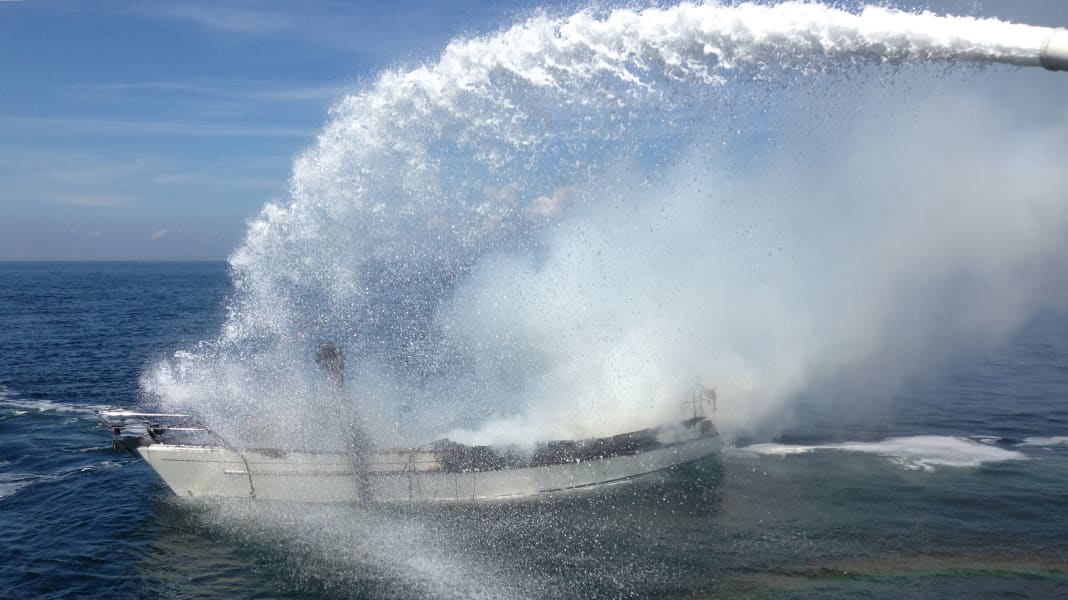
A fire at sea is a nightmare for sailors. The crew's lives are in danger and the ship is a wreck if the fire cannot be extinguished. The images of burnt-out ships are also shocking: all that usually remains of modern plastic yachts is a melted pile of plastic. Fortunately, burning yachts are rarely heard of along the coast.
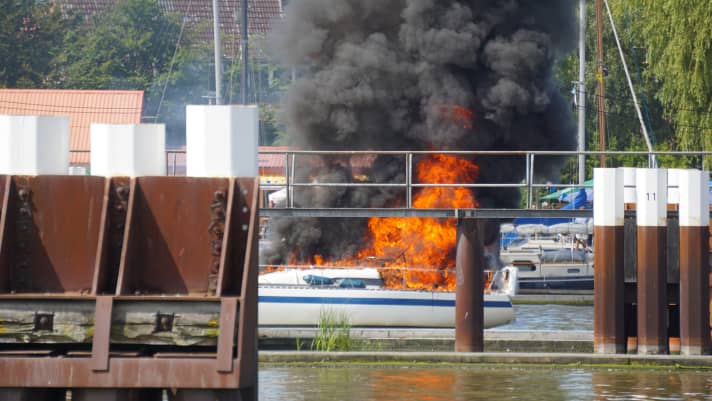
However, the figures speak a different language: in 2014 alone, the DGzRS deployed 14 times for pleasure craft on which fires had broken out; the KNRM rescuers in the Netherlands even deployed 30 times. That doesn't sound like much at first, but with an average of three crew members, this means that a good 130 people's lives were in danger. Why are there always fires on yachts?
The top 4 causes of fire
"The galley is certainly number one," says Wolfgang Behnk, technical director of the DGzRS training centre in Neustadt and a sailor himself. "It's often curtains that catch fire or pans when frying - small things with big consequences." Behnk continues: "Of course, the gas system is also a problem. There are ships on which it has never been checked for years. It's not mandatory. This can then lead to leaks. And at some point this results in a risk of explosion!"
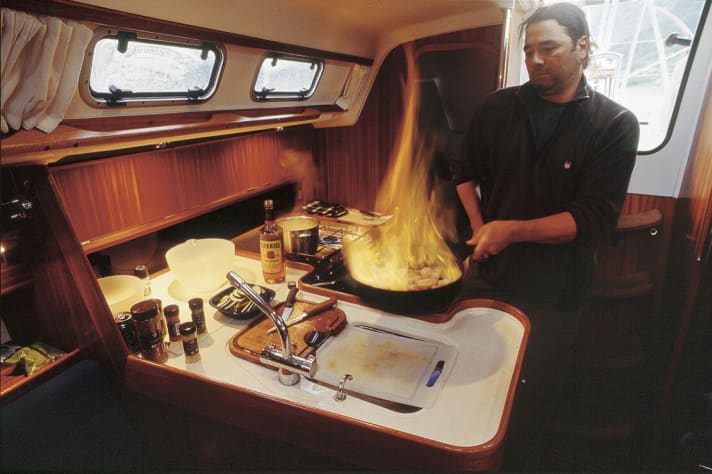
The drive system follows in second place. "Diesel fuel can also burn if it is hot enough. For example, if it drips onto the uncooled part of the exhaust pipe. Then all it takes is a spark and it burns," warns the technician. As a rule, however, it is petrol engines that pose a greater fire risk. Leaking fuel lines or carburettor seals produce flammable mixtures. Incidentally, this also applies to outboard motor tanks or canisters located in the cockpit.
Behnk sees the electrical systems on yachts as the third biggest fire hazard, especially if they are older. There are two reasons for this. Behnk: "Over time, more and more devices are being retrofitted. Then currents suddenly flow through cables that are not suitable in terms of cross-section. If the fuses fit, it's not too bad. However, the defective fuse is then often simply replaced with a larger one and the problem is there." Furthermore, over the years, cables can be eaten away by corrosion. This reduces the cross-section, resulting in increased resistance in the cable. The fuse does not trip because the currents are not high enough. However, the cable is too thin. The result, according to Behnk: "It heats up and can cause a fire."
Last but not least, the expert knows of a few fire hazards that are familiar from the home: "Candles that are forgotten, or even cigarettes in bed." Whether caused by an open fire or electronics: if parts of the yacht catch fire, there are usually only a few seconds to extinguish it. Therefore, the greatest attention should be paid to prevention.
How you can reduce the risk of fire
Heat development, flammable liquids, vibrations and electrics all come together in the engine compartment, and they are well encapsulated. This considerably increases the risk of cable damage or loosened connections. However, the electrical system is rarely included in the usual inspection schemes, or it is reduced to the function of the signalling lights. However, this says nothing about the condition of the current-carrying cables between the alternator and the batteries. The alternator cable connections should therefore be regularly included in the oil level and coolant test cycle.
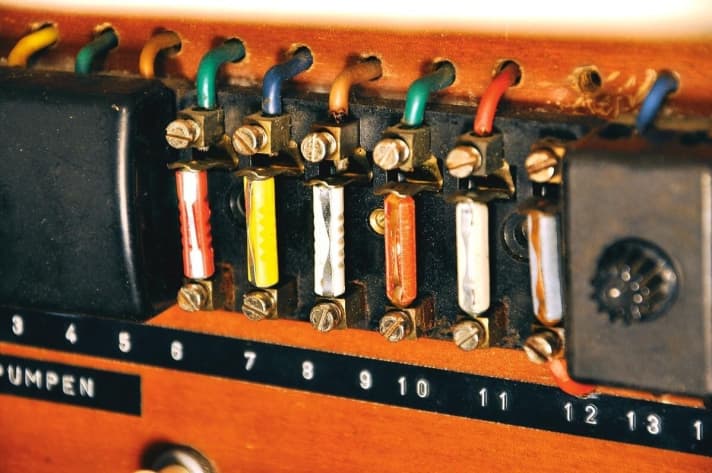
"Fires often only occur after the engine has been running for a long time, for example when driving home for several hours on a slow weekend," reports Ole Pietschke from Pantaenius. This indicates leaks in the fuel system, which only become a problem when the engine is fully warmed up. Diesel does not catch fire easily. In direct contact with the exhaust manifold, however, the fuel reaches ignitable temperatures.
So nothing burns in the pantry
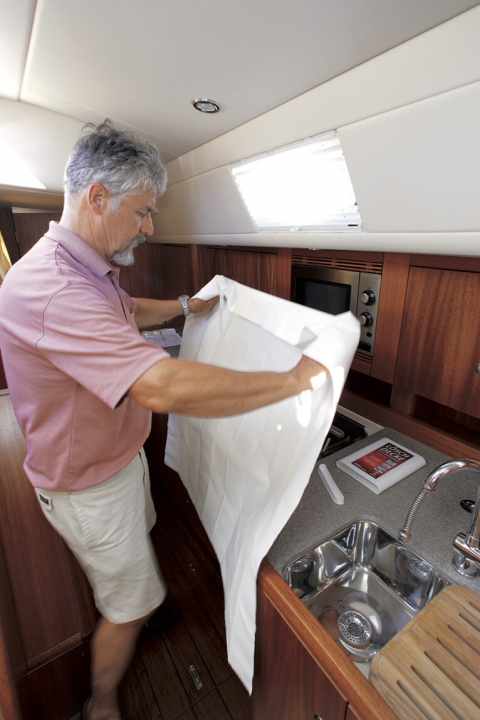
Classic fire scenarios in the pantry are dishcloths and kitchen roll forgotten behind the hob or pans with overheated fat. Such fires are usually discovered immediately, which increases the chances of successfully extinguishing them. Fire blankets and extinguishing sprays are the means of choice as they are quickly ready for use and cause little or no consequential damage.
Incorrectly installed and poorly maintained gas systems also pose a considerable risk. Even if accidents are relatively rare, the consequences of an explosion are all the more devastating. A professional inspection of the gas system every two years does not cost the earth and should be mandatory.
How and with what a fire is best extinguished depends on what has caught fire. This is why the extinguishers are labelled with so-called fire classes. On board, classes A are relevant for embers such as wood, B for flammable liquids such as diesel and petrol and F for grease. The latter cannot be extinguished with water and should be fought with an extinguishing blanket or spray.
The other fires can be extinguished most universally with ABC powder. This is both a blessing and a curse: cheap, long-lasting and effective. When used, the extremely fine powder penetrates every crevice, no matter how small. This makes it easy to fight fires, but the consequential damage is also considerable. The salty powder attacks metals and can lead to complete failure of the on-board electrical and electronic systems even months after the fire.
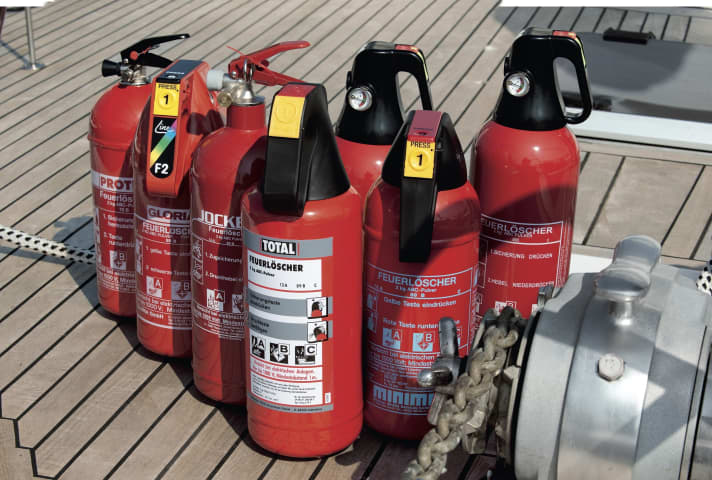
Firefighter Holger Flindt, fire protection expert at Pantaenius, therefore recommends using CO2 extinguishers in the engine compartment. The gas displaces the oxygen and stops the flames without leaving any residue. Ideally, it is sprayed in through an extinguishing opening, known as a fire port, without opening the panelling. In this way, no oxygen reaches the source of the fire and the gas cannot escape too quickly. The disadvantage of CO2 is that it hardly cools the seat of the fire. Embers can therefore flare up again as soon as oxygen is available again. There is also a risk of suffocation. These problems do not exist when using extinguishing foam. It forms a layer over the source of the fire and cools it down considerably. Unlike powder or gas, however, the foam does not spread as a cloud. It is therefore virtually impossible to completely cover the engine compartment with a foam extinguisher using only one extinguishing opening.
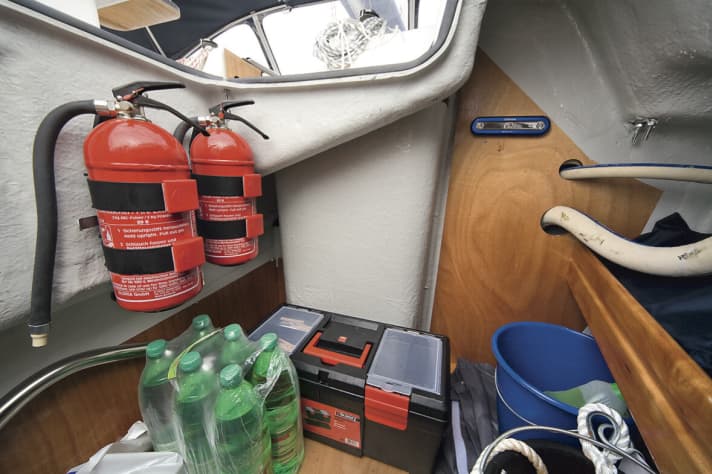
Extinguishing agents must be immediately accessible
However, the best extinguishing agent is of little use if it cannot be reached in an emergency. For this reason, the extinguishers should be easily accessible on board, in the foredeck and near the companionway. At least one more should also be placed in the forecastle so that you don't have to search through the smoke when smoke billows out of the companionway. Important: The extinguishers must not be blocked by fenders, sail bags or other equipment. And everyone on board should know where they are and how to activate them. In an emergency, seconds can make the difference between success and failure in fighting a fire. If the incipient fire has turned into a full-blown fire, there is hardly anything that can be saved with on-board resources and without professional breathing protection. The chances of quickly getting a fire under control can be significantly increased through practice. In Germany, for example, the local fire brigade organises such courses.


